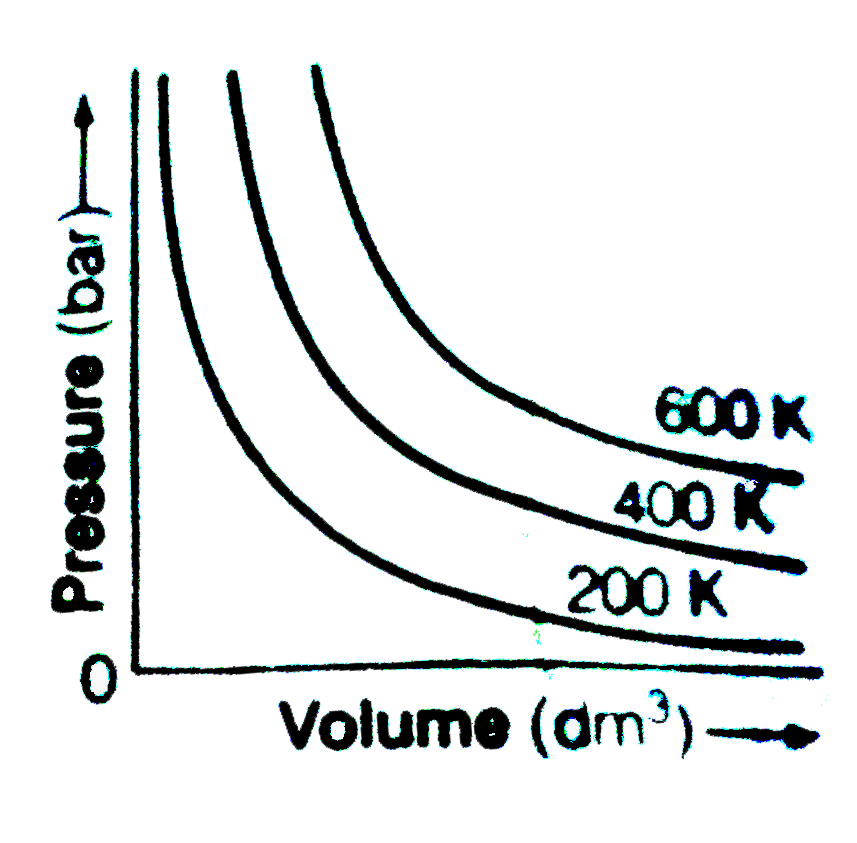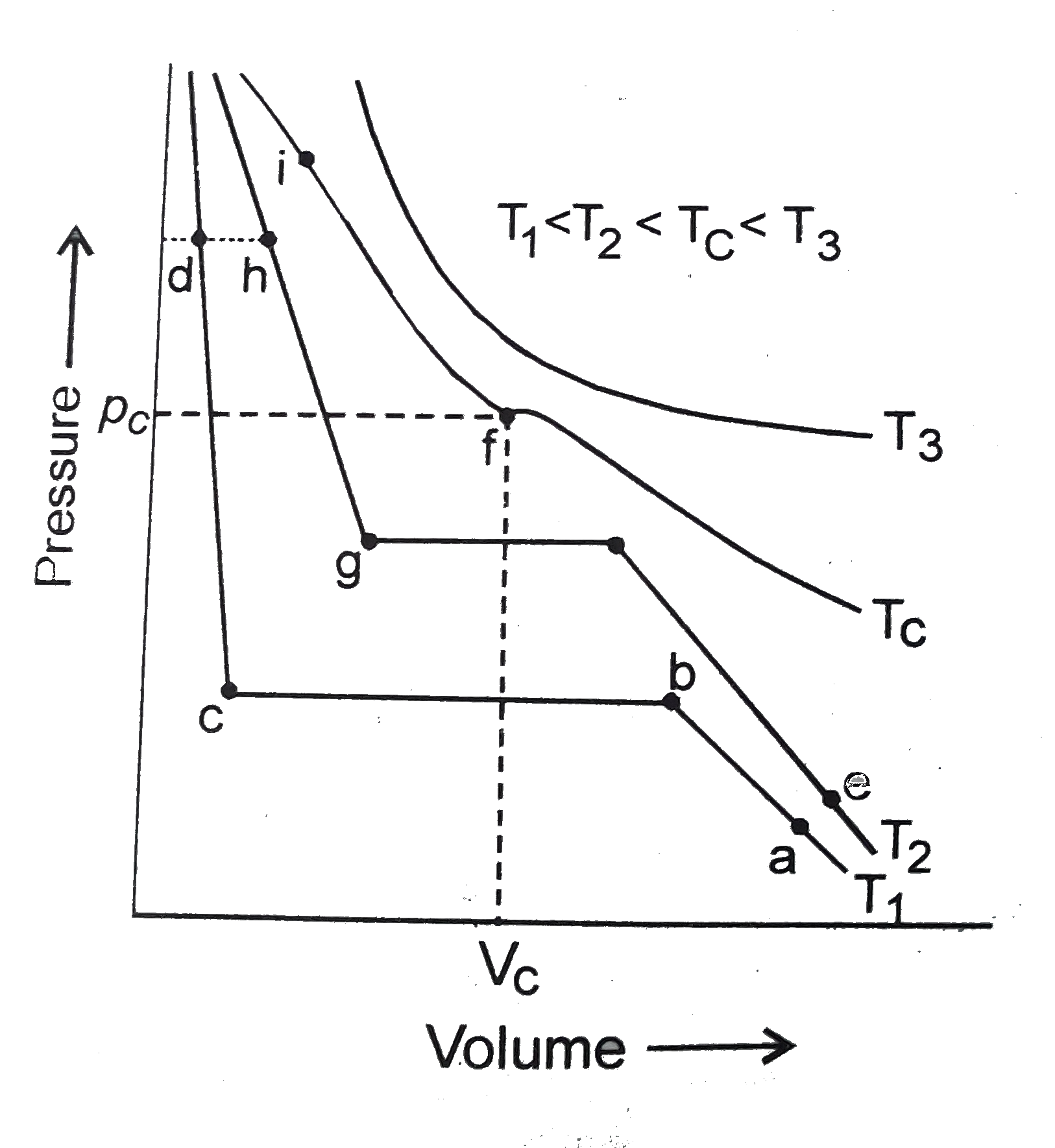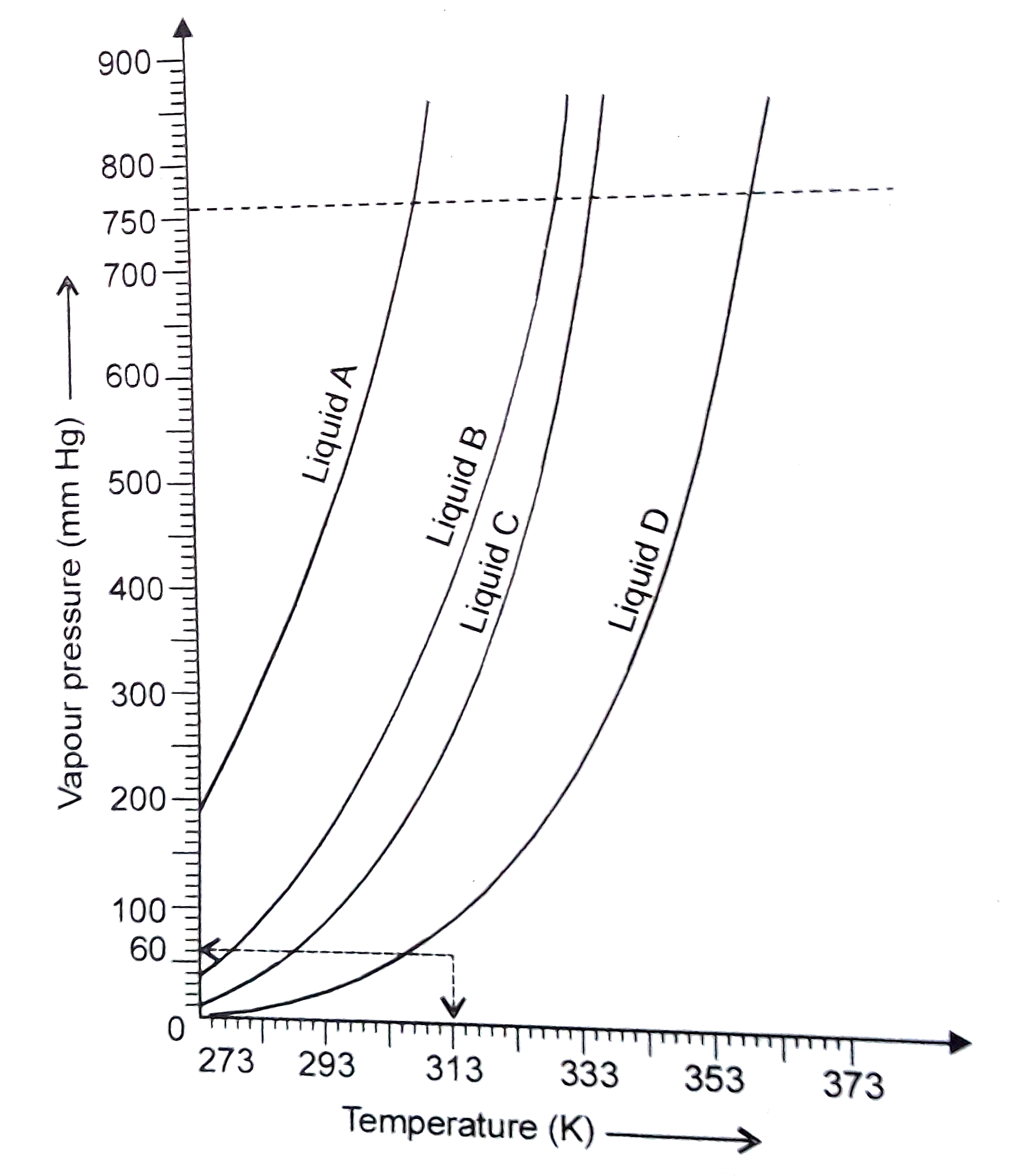Complete Solutions to Short Answer Type Questions of chapter STATES OF MATTER : GASES AND LIQUIDS of Class 11 book with complete answers and questions
| Class 11 | CHEMISTRY |
| Chapter | STATES OF MATTER : GASES AND LIQUIDS |
| DINESH COMPANION CHEMISTRY | Short Answer Type Questions |
| Number Of Questions | 45 |
| Academic Year | 2023-24 |
If 1 g of each of the following gases are takes at STP, which of the gases will occupy (a) greatest volume and (b) smallest volume ?
`Co, H_(2)O, CH_(4), NO`
View SolutionPhysical properties of ice, water and steam are very different. What is the chemical composition of water in all the three states ?
View SolutionThe behaviour of matter in different state is governed by various physical law. According to you, what are the factors that determine the state of matter ?
View SolutionUse the information and data given below to answer the question (a) to (c),
Stronger intermolecular forces result in higher boiling point.
Strength of London forces increases with the number of electrons in the molecule.
Boiling point of `HF, HCl, HBr` and `HI` are 293 K, 189 K, 206 K and 238 K respectively.
(a) which type of intermolecular forces are present in the molecules `HF, HCl, HBr` and `HI` ?
(b) Looking at the trend of boiling points of `HCl, HBr` and `HI`, explain out of dipole-dipole interaction and London interaction, which one is predominant here.
(c) Why is boiling point of hydrogen fluoride highest while that of hydrogen chloride lowest ?
View SolutionWhat will be the molar volume of nitrogen and argon at 273.15 K and 1 atm ?
View SolutionTwo different gases 'A' and 'B' are filled in separate containers of equal capacity under the same condition of temperature and pressure. On increasing the pressure slightly the gas 'A' liquefies but gas B does not liquify even on applying high pressure until it is cooled. Explain this phenomenon.
View SolutionTwo different gases 'A' and 'B' are filled in separate containers of equal capacity under the same condition of temperature and pressure. On increasing the pressure slightly the gas 'A' liquefies but gas B does not liquify even on applying high pressure until it is cooled. Explain this phenomenon.
View SolutionValue of universal gas constant (R) is same for all gases. What is its physical significance ?
View SolutionOne of the assumptions of kinetic theory of gases states that "there is no force of attraction between the molecules of a gas". How far is this statement correct ? Is it possible to liquefy an ideal gas ? Explain.
View Solutionthe magnitude of surface tension of liquid dpends on the attractive forces between the molecules. Arrange the following in increasing order of surface tension :
Water, alcohol `(C_(2)H_(5)OH)` and hexane `[CH_(3)(CH_(2))_(4)CH_(3)")"]`.
View SolutionPressure exerted by saturated water vapour is called aqueous tension. What correction term will you apply to the total pressure to obtain pressure of dry gas ?
View SolutionName the energy which arises due to motion of atoms of molecules in a body. How is this energy effected when the temperature is increased ?
View SolutionName two intermolecular forces that exist between HF molecules in liquid state.
View SolutionOne of the assumptions of kineti theory of gases is that there is no force of attraction between the molecules of a gas.
State and explain the evidence that shows that the assumption is not applicable for real gases.
View SolutionCompressibility factor, Z of a gas is given as `Z=(pV)/(nRT)`
(i) What is the value of Z for an ideal gas ?
(ii) For real gas what will be the effect on value of Z above boyle's temperature ?
View SolutionThe critical temperature `(T_(c))` and critical pressure `(p_(c))` of `CO_(2)` are `30.98^(@)C` and 73 atm respectively. Can `CO_(2) (g)` be liquefied at `32^(@)C` and 80 atm pressure ?
View SolutionFor real gases the relation between p, V and T is given by c=van der Waal's equation
`(p+ (an^(2))/V^(2)) (V-nb)=nRT`
where, 'a' and 'b' are van der Waal's constanrs, 'nb' is approximately equal to the total volume of the molecules of a gas. 'a' is the measure of magnitude of intermolecular attraction.
(i) Arrange the following gases in the increasin order of 'b'. give reason.
`O_(2), CO_(2), H_(2), He`
(ii) Arrange the following gases in the decreasing order of magnitude of 'a'. Give reason.
`CH_(4), O_(2), H_(2)`
View SolutionThe relation between pressure exerted by an ideal gas `(p_("ideal"))` and observed pressure `(p_("real"))` is given by the equation,
`p_("ideal")=p_("real")+ (an^(2))/V^(2)`
(i) If pressure is taken in `NM^(-2)`, number of moles in mol and volume in `m^(3)`, calculate the unit of 'a'.
(ii) What will be the unit of 'a' when pressure is in atmosphere and volume in `dm^(3)`?
View SolutionName two phenomena that can be explained on the basis of surface tension.
View SolutionViscosity of a liquid arises due to strong intermolecular forces existing between the molecules. Stronger the intermolecular forces, greater is the viscosity. Name the intermolecular forces existing in the following liquids and arrange them in the increasing order of their viscosities. Also give reason for the assigned order in one line.
water, hexane `(CH_(3)CH_(2)CH_(2)CH_(2)CH_(2)CH_(3))`, glycernine `(CH_(2)OHCH(OH)CH_(2)OH)`
View SolutionExplain the effect of increasing the temperature of a liquid, on intermolecular forces operating between its particles. What will happen to the viscosity of a liquid if its temperature is increased ?
View SolutionThe variation of pressure with volume of the gas at different temperatures can be graphically represented as shown in figure. On the basis of this graph answer the following question.
(i) How will the volume of a gas change if its pressure is increased at constant temperature ?
(ii) At a constant pressure, how will the volume of a gas change if the temperature is increased from 200 K to 400 K ?

View SolutionPressure versus volume graph for real gas and are shown in figure. Answer the following question on the basis of this graph.

(i) Interpret the behaviour of real gas with respect to ideal gas at low pressure.
(ii) Interpret the behaviour of real gas with respect to ideal gas at high pressure.
(iii) Mark the pressure and volume by drawing a line at the point where real gas behaves as an ideal gas.
View SolutionIsotherms of carbon dioxide at various temperature are represented in Fig.
Answer the following questions bases of this figure.
(i) In which state will `CO_(2)` exist between the point a and b at temperature `T_(1)`?
(ii) At what point will `CO_(2)` start liquefying when temperature is `T_(1)`?
(iii) At what point will `CO_(2)` be completely liquified when temperature is `T_(2)`.
(iv) Will condensation take places when the temperature is `T_(3)`.
(v) What portion of the isotherm at `T_(1)` represents liquid and gaseous `CO_(2)` at equilibrium ?

View SolutionThe variation of vapour pressure of different liquids with temperature is shown in the figure.
(i) Calculate graophically boiling points of liquids A and B.
(ii) If we take liquid C in a closed vessel and heat it continuosly, at what tempeature will it boil ?
(iii) At high altitude, atmosopheric pressure is low (say `60 mm Hg`). At what temperature liquid D boils?

View SolutionWhy does the boundary between liquid phase and gaseous phase disappear on heating a liquid upto critical temperature in a closed vessel ? In this situation what will be the state of the substance ?
View SolutionWhy does sharp glass edge become smooth on heating it upto its melting point in a flame ? Explain which property of liquids is responsible for this phenomenon.
View SolutionExplain the term 'laminar flow'. Is the velocity of molecules same in all the layers in Laminar flow ? Explain you answer.
View SolutionDefine gaseous state of a substance.
View SolutionWhat is the cause of gas pressure ? How is it measured ?
View SolutionThe pressure of a gas is `2.5 atm`. Calculate the value in torr.
View SolutionWhat is the difference between barometer and manometer?
View SolutionBOYLE'S LAW
View SolutionIn what respect does Gay Lussac's law differ form the Charles's law ?
View SolutionWhat is the equation of state of an ideal gas ? Why is it so called ?
View SolutionShow what universal gas constant represents work done per degree per mole ?
View SolutionCalculate the value of R in :
(i) SI units , (II) Cal `"degree"^(-1) "mol"^(-1)` , (iii) Litre atm `K^(-1) "mol"^(-1)`
View SolutionDALTON'S LAW OF PARTIAL PRESSURE
View SolutionState the law which relates the rate of diffusion of gases to their densities?
View SolutionDerive a relation between density and molar mass of the gas.
View SolutionHow will you justify that the collision among the gas molecules are perfectly eleastic?
View SolutionDefine most probable speed, average speed and root mean square speed of a gas. How are they related to each other ?
View SolutionDiscuss in brief the significance of the van der Waal's connstants. Also write their units.
View SolutionThe values of van der Waals constant a for a gas is zero. What does it signify ?
View SolutionWhy do He and `H_(2` shows exceptional behaviour as compared to rest of the gases ?
View Solution
Short Answer Type Questions questions and complete solutions for chapter STATES OF MATTER : GASES AND LIQUIDS of S DINESH & CO CHEMISTRY (HINGLISH) of Class 11
All Exercises from DINESH COMPANION CHEMISTRY Class 11 CHEMISTRY STATES OF MATTER : GASES AND LIQUIDS
- Additional Important Questions
- Assertion and Reason
- Assignment (Very Short Answer Question)
- Comphension 1
- Comphension 2
- Comphension 3
- Comphension 4
- Concept Based Questions
- Examples
- Exercise Fully Solved
- Long Answer Question
- Multiple Choice Question
- Multiple Choice Question (Select the correct Answer)
- Practice
- Problem
- Question Bank (MCQ)
- Select the correct answer
- Short Answer Type Questions
- Statement Type Question
- Straight Objective Type (MCQ)
- Value Based Question
- Very Short Answer Questions